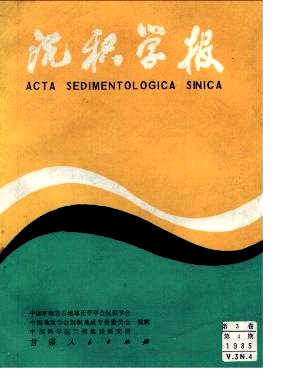HTML
| [1] | (1)陈福、朱笑青,玄武岩古风化淋滤生成条带状铁硅建造的模拟实验,地球化学,1984,第4期。 (2)南京大学地质系,地球化学(修订本),1979科学出版。 (3)陈先沛、高计元,中国碳酸岩中层控矿床的沉积环境,中国科学,1983,第12期。 (4)J.Eichler, 1976,层控矿床和层状矿床,第七卷P 116-151,地质出版社,1981。 (5)H.A.Kopsa,noH, 1971,前寒武纪含铁硅质建造富铁矿的形成条件和主要分布规律,《国外地质科技动态》1973,第九期。 (6)A.M.Uexomcxait 1974,风化壳矿产的分布规律,《国外前寒武纪含铁硅质岩建造富铁矿床地质特征和堪查方法》(专辑),1975, 6、地质科学院情报所。 (7)McCa11,G.J.H. Progress in Research into the Early History of the Earth. Archaean Geology. Second International Symposium, Perth, 1980. Geological Society of Australia Iacorporated, 1981· (8)William W. Rubey,1951, Geologic History of Sea water. The Origin and Evo-lution of Atmospheres and Oceans.John Wiley&Sons.Inc.,New York.London Sydaey. 1964 (9)Konrad B·Krauskopf 1979, Introduction to Geochemistry, Second Edition, McGraw-Hill Book Company. (10) P.аррелс Иф.Маккензи,Зволюдия осадочнчх парод.Изд.Мзд.Мир,Москва,1974. (11)А.И.Перельман,Геохимия элементов в эоне гидергенеэа.Иед./Недра/Мо-сква,1972. 12) В.А.Соволов,Гехимия природнчх гаэов. Иэд./Неда/Москва.1971 (13) Н.М.Страхов:Типч литогенеэа и и х эволюция вистории.Гостеолтехи-эдат,Москва:1963 (14) B. A. Teняков, 1977, 3кэогенно-метаморфогеннче циклч,геохими-чeская судьъа СО2и рудогенниe процесси в докeмърии. B кн./Гeохронология и чроълeмч рудообра3ования/ Иэд./Наука/ Москва. (15) A.B.Ронов,1973:3волючия состава чоРод и геохимияeскинх продeссов в осадочно облочкe 3емли. 1 МедунаРодншй гехнмичeский (20) В.А.Теняков, Геохимия бокситообразовательного цроцесса.1 межпународный геохимический конгресс. Доклалы 4,кн .1,1973 (21) Е .М.Камерон и А.Вауман,Карбонатное осадкопакопление в Архее. 1международ ный геохимический конгресс,Доклады 4, ки. 1 Москва,1973 (22) А.А.Ярощевский,Динамическая модель осадочного цикла. 1 международный гехимический коигресс.Том 4, кн. 1,Москва,1973 (23) Г.В.Войткевич, А.Е.Мирощдиков,А.С.Поваренных, В.Г.Прохоров,Краткий справочник цо геохимим:Издание второе,/недра/Москва,1977 конгресс:СССР,Докладч4,кн.1,Москва,1973 (16) Р.Е.Фолинсби: 1971, ДокeмбРиискиe зпохи: атмос-фeрнчe или глубиннчe.1Межлународншй геохимический конгРесс,СССР Tом 4,кн.1:москва,1973. (17)С.С.Голдич, Возраст докембрийскинх полосчатих жeлезорудншх форма-ций.в кн./Докембрийские железоруднъе формации Мир/Изд./Мир/Мо-сква,1975 (18) Л.Н.Формозова, Формационнче типч железных руд докембрия и ихзволюция.Изд./Недра/,Москва,1973. (19) А.М.Гудвин,1973,АРхейские железоруднце формации и тектонические бас-сейны канадского шита.в ки./ Докембрийские железорудные Формации Мир/,Изд./Мир/Москва,1975 |






 DownLoad:
DownLoad: